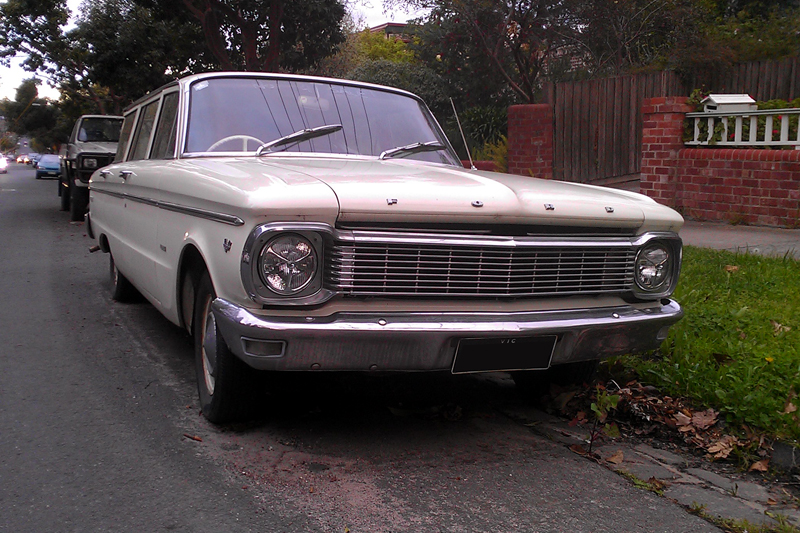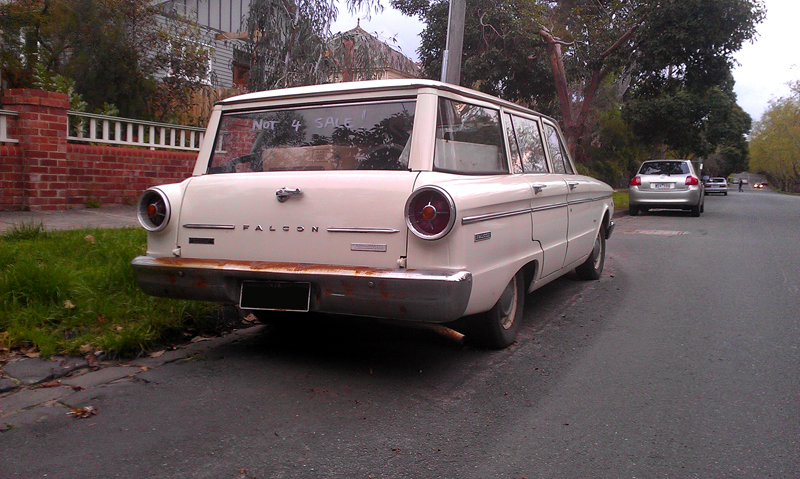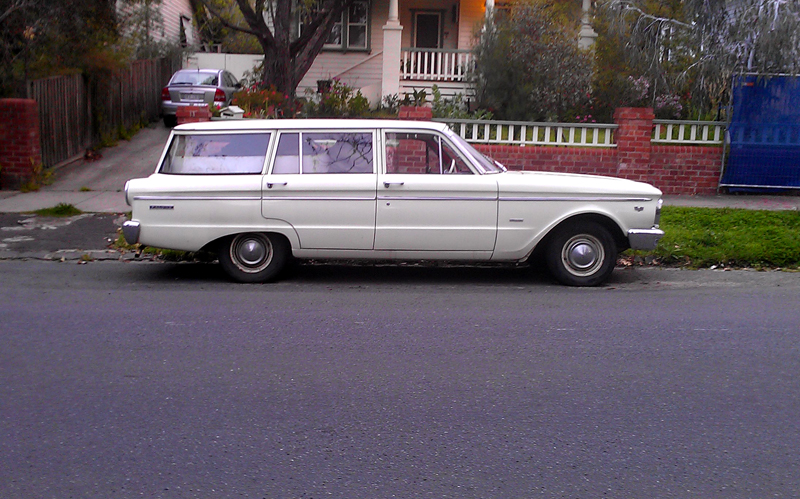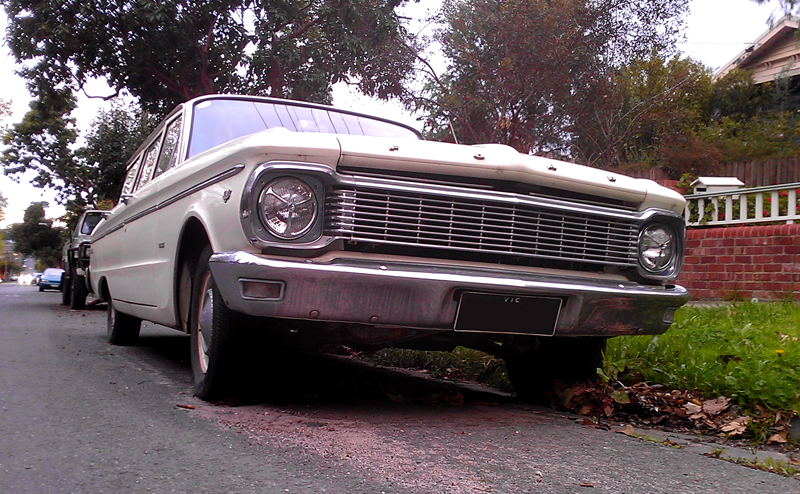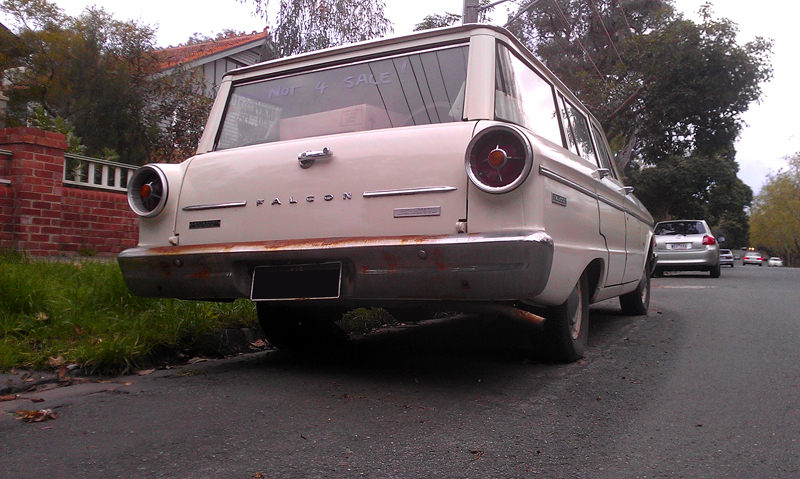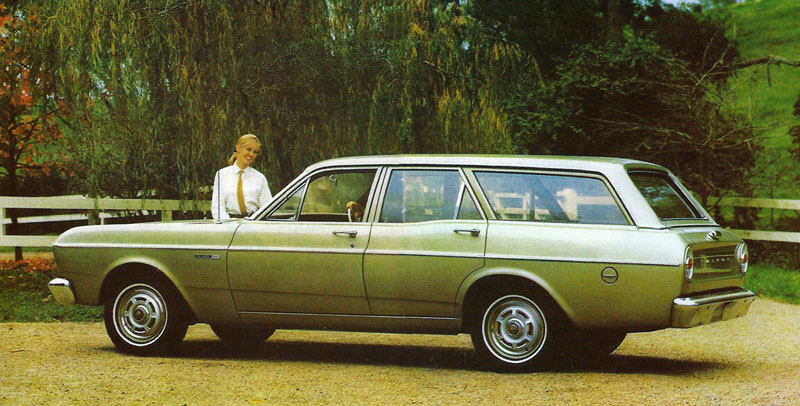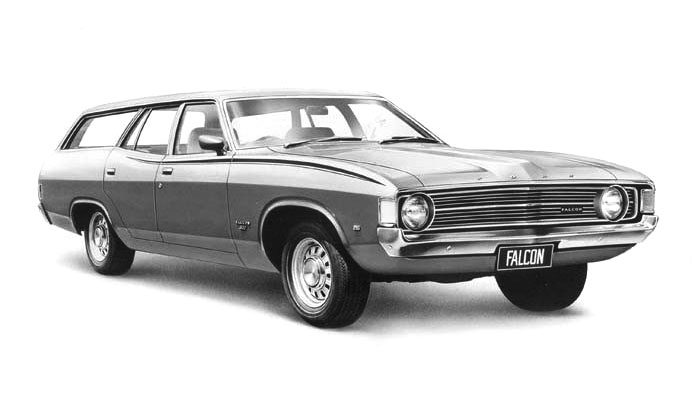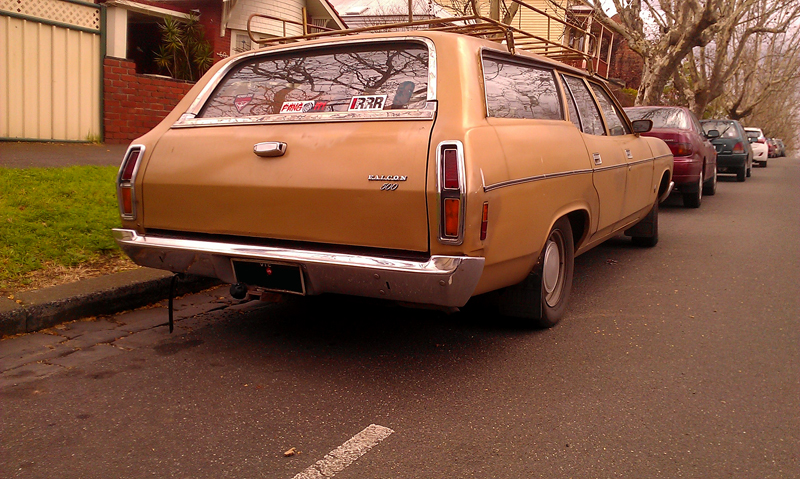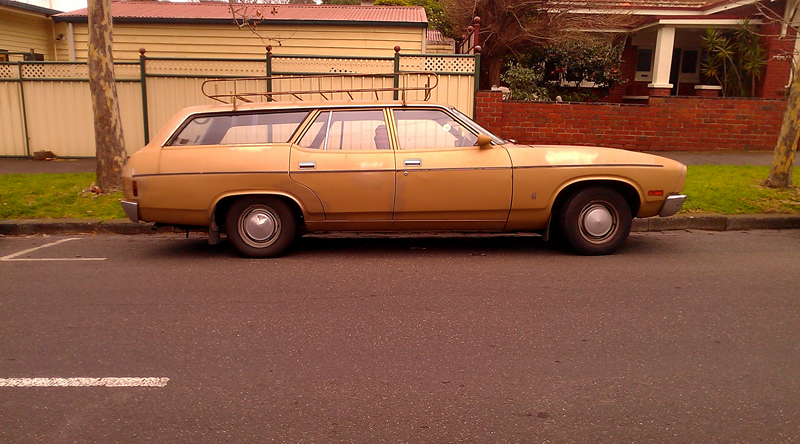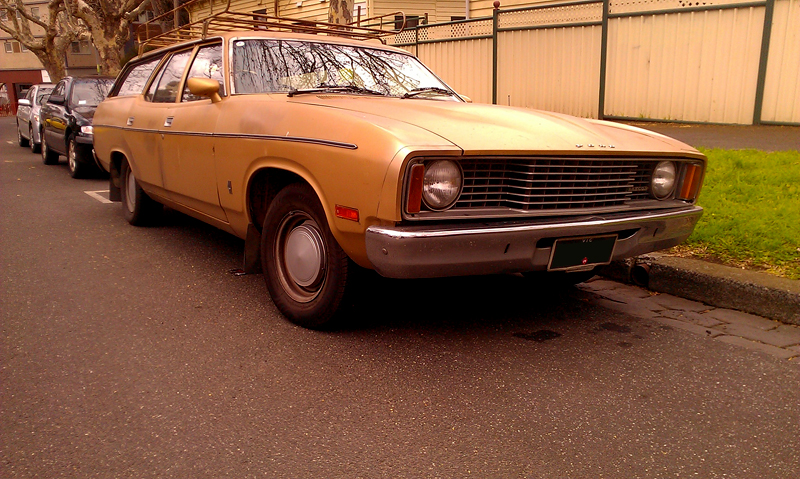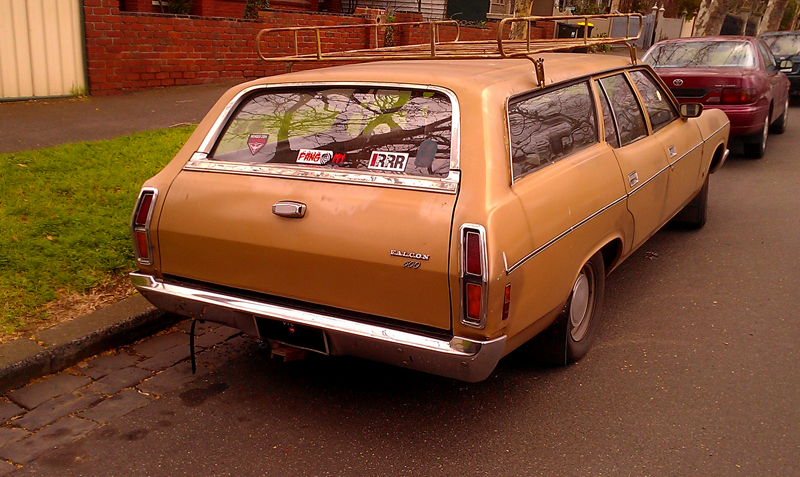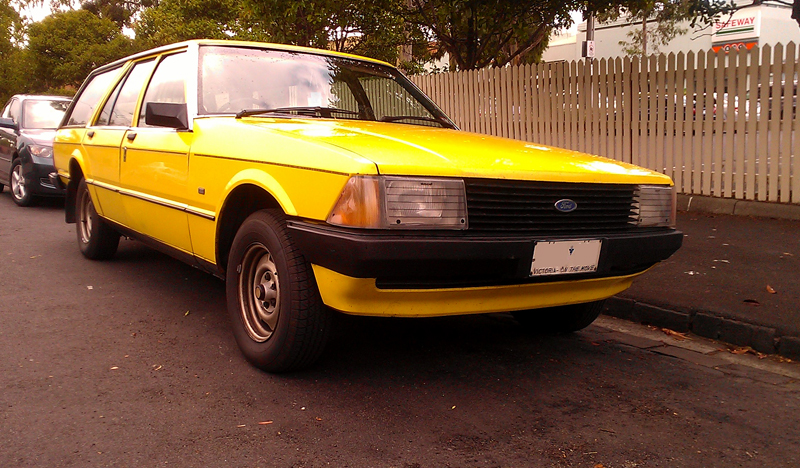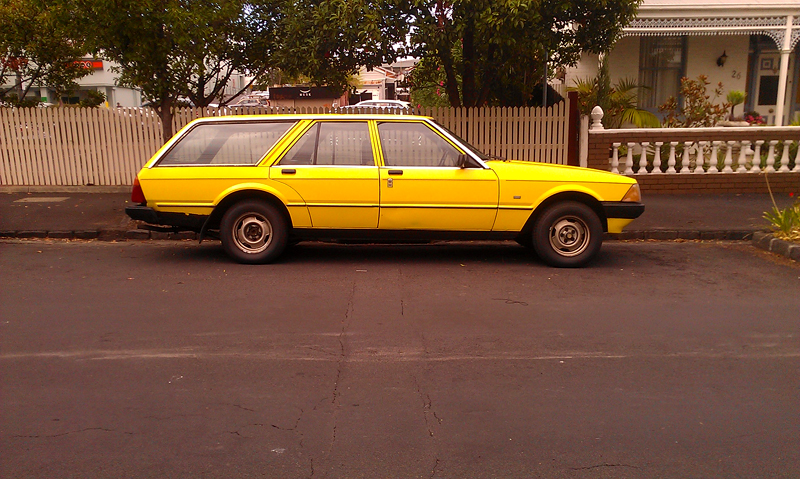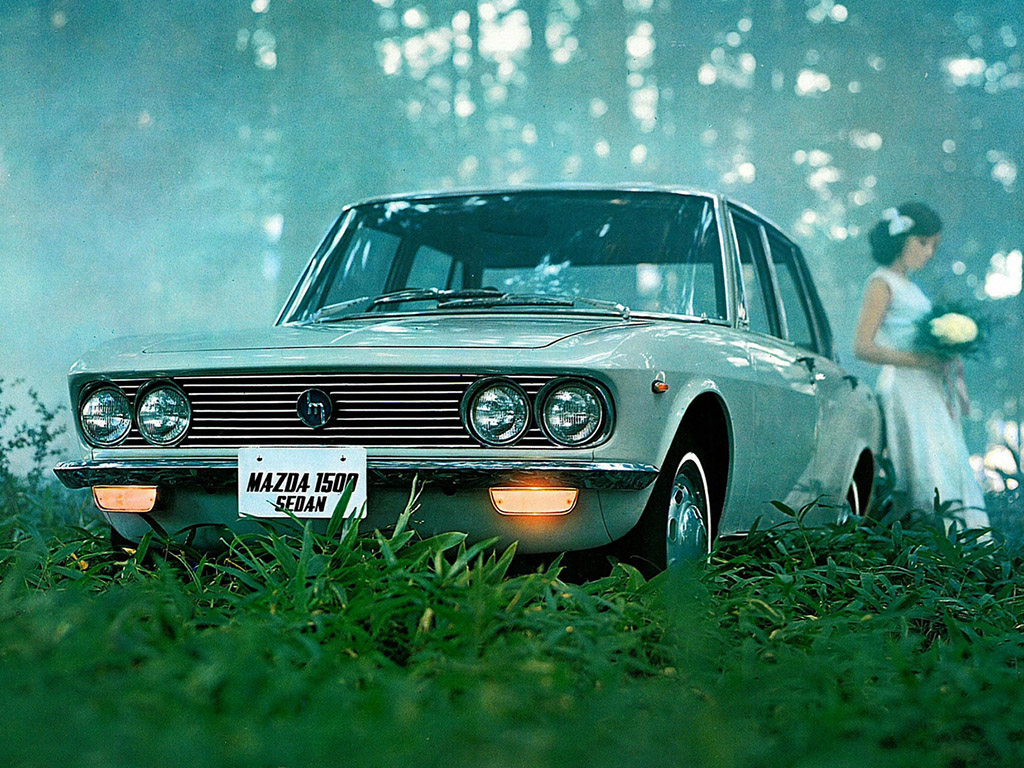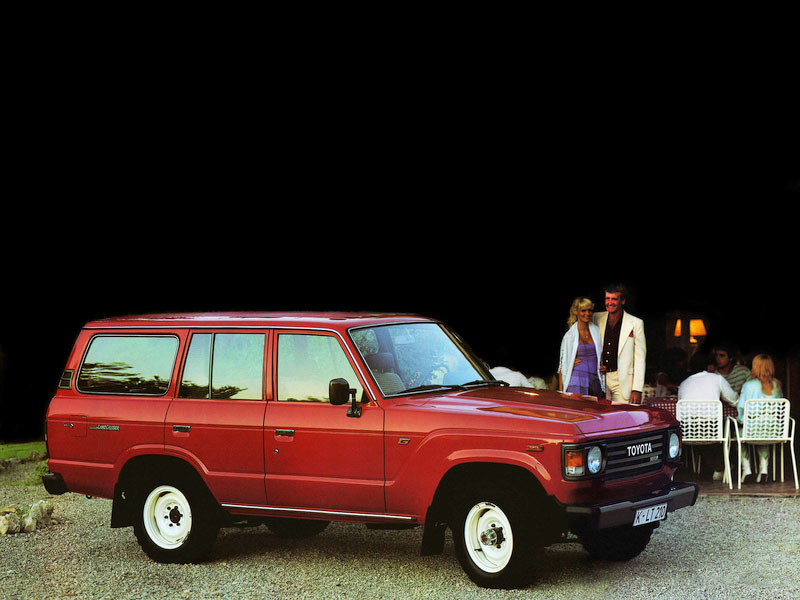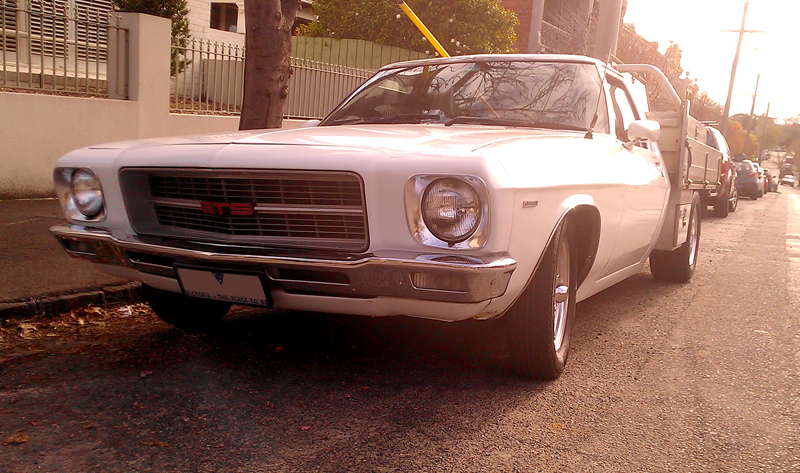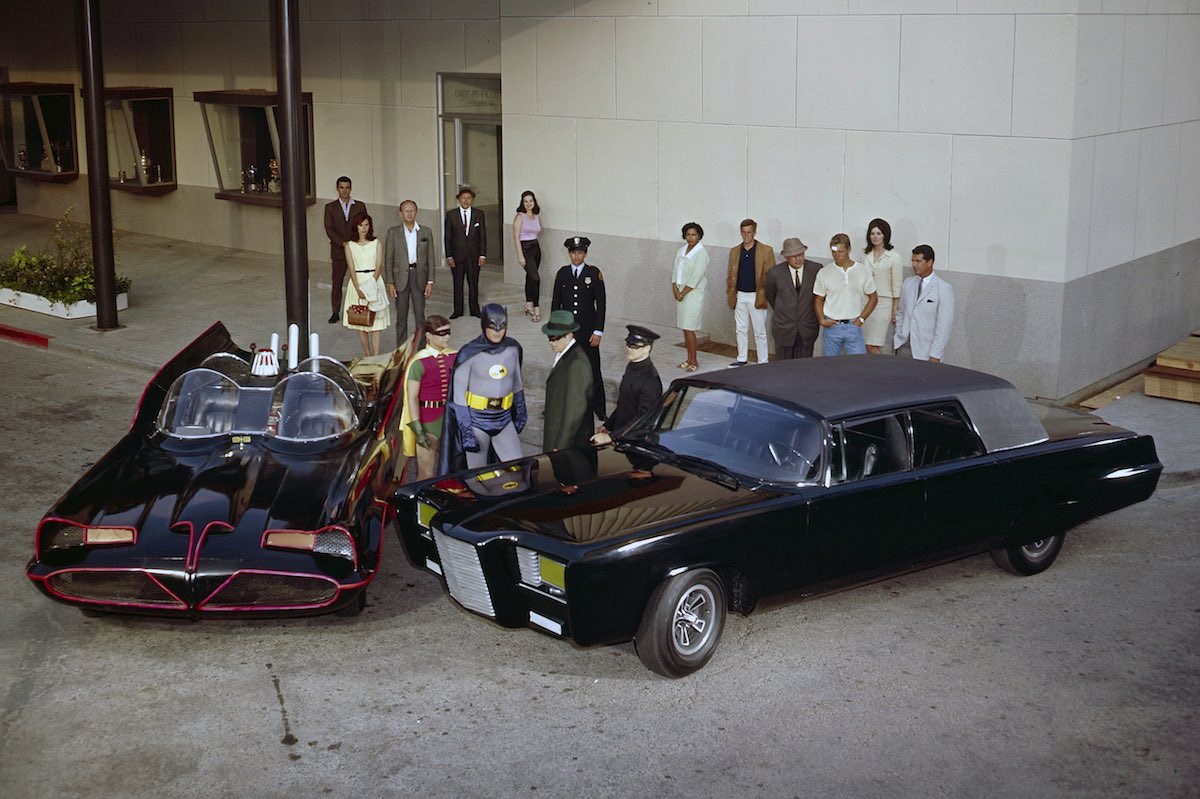![brusselsluce]()
The body of the 1966 Mazda Luce is a masterpiece of sophistication and simplicity. In this extended piece, I look at a relationship between carmaker and carrozzeria that has never been sufficiently explained and try to address something people have been telling me for as long as I can remember – the Luce was a rejected Alfa Romeo proposal.
![jzdl]()
By July 1975, the design of the DeLorean was complete, just before Giugiaro’s workers went off for their month-long vacation. Bill Collins approved the final full-scale exterior model and interior mockup. He was not however prepared, used as he was to what happened at General Motors, for the next move.
‘Okay,’ he told Giugiaro. ‘The model looks good. Now when can I have the drawings?’
‘What drawings?’ queried the surprised Italian designer.
‘Well, the drawings that define the body surfaces.’
‘I’m sorry, Mr. Collins,’ said Giugiaro. ‘But it is the model that represents our definitive work, not any drawings. You’ll find it clearly specified in the contract.’
– from ‘DELOREAN The Rise and Fall of a Dream-Maker’ by Ivan Fallon and James Srodes.
![discovolante]()
Carrozzeria Touring Superleggera set the cat amongst the pigeons with their 1952 Disco Volante.
Its shape wrapped like a seamless organic envelope around the wheels and the mechanicals, save a chrome strip along the side marrying the top and bottom halves. This flying saucer was to influence generations of sportscars.
It immediately laid the challenge out to all the other carrozzerie.
![BAT5]()
Carrozzeria Bertone responded with the 1953 Berlina Aerodynamica Technica 5.
The BAT 5 was a blank-faced sea-creature threatening menace. Those stingray fins were curled prone – ready to strike down with a propulsive thrust. Conceived with misguided aerodynamic aspirations, it was still a most extraordinary sight to behold.
![early 1900 sedan]()
Both cars were built over Alfa Romeo’s first all-new post-war car, the 1950 four-cylinder 1900.
In an effort to generate publicity and provide work to their hungry local industry, Alfa Romeo distributed the new chassis around the coachbuilders of Turin. In all, 38 different types of body would be built by 13 carrozzerie and it would be marketed as ‘the family car that wins races.’
When Bertone received this invitation, they had never really worked with Alfa Romeo before.
![Early bertone]()
During the 1920s and 30s, most of Bertone’s output came on Fiat or Lancia chassis. They could turn out a fine looking sportscar or commercial body, but they specialised in short-series four-door cars clad in a well-proportioned conservatively-cut body such as this 1932 Lancia Artena (middle left) with the occasional flourish being seen on this 1934 Fiat Ardita (middle right).
In that time Bertone had only built two Alfa Romeos; a 6C 2300 limousine in 1932, and a 6C 2500 coupe in 1947.
![Bertone rendering resize]()
Giovanni Bertone had started in 1912 as a cartwright, built his first body in 1921 and by 1934 he had a full-blown carrozzeria capable of taking 150 workers in large premises on the corso Peschiera in Turin.
His son, Nuccio, had dabbled in racing and drawing cars, but his greatest contribution to the business came from his salesmanship. With the large new factory came the impetus for volume, and the young Nuccio had traversed the entire country setting up concessions with dealerships and garages, and established an eagerly anticipated yearly roadshow.
Nuccio understood the benefits of getting the family name around.
![scaglione]()
After the war, the business was in Nuccio’s hands. A fortuitous meeting with Wacky Arnolt had resulted in the construction of hundreds of special-bodied MGs and Bristols to be sold in the USA. For Nuccio, seated here in the Bristol with his head stylist Franco Scaglione, this was a business-saving order and his first substantial overseas foray.
![alfa coupe]()
Alfa Romeo was pleased with the BAT 5 and it was followed by the equally extravagant 1954 BAT 7 and the wonderfully simplified 1955 BAT 9 (left column). And there were others.
The 2000 Sportiva of 1954 (top right) presaged elements of the E-type profile. The 1955 Giulietta Spider proposal was a beautiful little topless BAT, but lost out to Pinin Farina for a large production run. The delectable 1957 Giulietta SS, perhaps Scaglione’s finest hour, was a series success with over 2700 examples being made through Giulia SS configuration.
![giuliettacoupemodel]()
Another Alfa, this cute little model, was to change Bertone’s fortunes.
![giuliacoupe]()
An in-house prototype of the 1954 Giulietta coupe had been prepared with the help of stylist Mario Boano of Ghia. Ghia was in the midst of troubles between Boano and chief engineer Luigi Segre, so Alfa Romeo turned to Bertone to complete the program. Scaglione’s development of the prototype’s shape was a great start.
![bertone factory]()
It was anticipated that Bertone and Ghia would split the manufacturing duties on the 1954 Giulietta coupe. Alfa asked Nuccio to take it all on. Nuccio was reluctant; the bodies were in the new style called ‘monocoque’ and the first order was for 1000 bodies. He was used to lots in the hundreds or less.
Bertone would ultimately build over 31,000 Giulietta bodies and be forced to find larger premises.
![grugliasco]()
By 1961, Bertone had moved to a new factory in Grugliasco on the outskirts of Turin. It was now a mass manufacturer with 700 employees and a capacity of 7500 bodies per year. Nuccio had entered the volume game. He would need many more coupes and other special bodies to keep his factory busy.
And then there were the sedans. The biggest volume in the game. Maybe building the bodies was too much for Bertone, but there was very good money in the styling prototypes. Nuccio well understood the benefits having his family name on hundreds of thousands of beautiful sedan bodies.
![Alfa-Romeo-1900-Touring]()
Back in 1950, it was rumoured Alfa head Iginio Alessio had a financial interest in Carrozzeria Touring. Touring got the largest outside order for their beautiful Sprint Coupe.
![1900purple]()
It was Alessio who initiated the great rush of special bodies on the 1900 but it was also he who decided to keep the sedan’s shape in-house – most probably in the name of appearing impartial. (He did, however, sneak a 1/5 scale model of the sedan to Touring who provided the final detailing.)
So instead of a four-door Sprint Coupe, we got this.
![orange giulietta]()
If the 1900 heralded the return of Alfa, the Giulietta was the bedrock of Alfa’s second great epoch.
A twin-cam 1300cc jewel of an engine and superb driving dynamics mark this diminutive model as the template for Alfa Romeo’s future.
The coupe may have been cute. The in-house sedan was twee.
![gothic2000]()
The 1957 2000 Berlina was doomed for two reasons; the new six cylinder engine was never going to be a winner, and the sedan was designed in-house.
It looked like the Lancia Flaminia having a gothic nightmare.
![sophia]()
Despite all the beautiful coupes and spiders they commissioned, it became some sort of tradition for Alfa to produce an inelegant sedan.
From its beginnings, Alfa has experienced a number of owners and managers including – in its future – the Italian Government, and its internal machinations on the sedans are inscrutable to me. Giuseppe Luraghi managed Alfa Romeo on and off after Alessio but he was no Valletta – the iron hand at Fiat. Orazio Satta Puliga had been in charge of developing all these models and Rudolf Hruska was a growing influence who would stay the longest. Whomever held the final decision on sedan shapes left a great opportunity wanting.
Today, Alfa Romeo are renowned for great-looking sedans, but back then it seemed there was only two ways to get a sensational body on an Alfa four-door.
Sophia Loren or a carrozzeria.
![giulia 4d replace]()
In 1958 Alfa Romeo turned to Bertone to look at freshening the Giulietta.
The brief called for Bertone to transplant the gothic face and tail of the senior model onto the junior.
A second attempt in 1961 was not much better. Bertone’s cleaner volumes and rectangular headlights couldn’t counter the intrinsic roundness of the Giulietta’s base body. Remember that front clip, though.
![Giuliaprova]()
But by 1960, Alfa had already prepared this sedan shape in-house for an updated version of the Giulietta known as tipo 105.
The prototype was a literally a flying brick. The body, though an aerodynamic success (surprisingly), was adroit and blocky with embellishments that didn’t add any grace.
No matter, it was to be a superb driving machine.
![small alfa]()
Alfa Romeo had also been experimenting with a 1000 cc front-wheel drive car. The prototype of the tipo 103 had been developed in-house with a shape very similar to that of the forthcoming 105.
Alfa asked Bertone to suggest an alternative. Nothing came of the project except this scale model, but that proposed shape would prove remarkably prescient.
![giugiaro250buck]()
The second Giulietta proposal and the tipo 103 model were the work of Giorgetto Giugiaro. In December 1959, he joined Bertone as chief stylist after Franco Scaglione had left. By the time he got inside Bertone, he was already running. He could turn over a two-door shape like nobody’s business. Here he is, at age 24 – tasked by Nuccio to turn Enzo’s eye – considering the fruits of this challenge; his voluptuously spare 1962 Ferrari 250GT.
![giugiaro500]()
Before joining Bertone, Giugiaro had spent four years at Fiat. Although his talents were recognised there, not one of his shapes ever got made. Being part of this large organisation didn’t suit Giorgetto’s combination of skills and temperament, but he had plenty of time to learn the importance of the family car in the scheme of automotive things.
Dante Giacosa had this image of skirmishing 500s up in his office, and it’s the only Giugiaro art that survives this period.
![r360]()
The same year Giugiaro joined Bertone, Toyo Kogyo released the Mazda R360. In Japan it was a smash success. It set a benchmark for its emerging kei car category in levels of comfort, shape and finish. Toyo Kogyo’s baby grabbed two-thirds of the market.
![Tokyo 1960s]()
The early 1960s saw a marked change on Japan’s streets. The 1950s revolved around infrastructure and economic rebuilding, and vehicle manufacturers were very strongly encouraged to focus output on trucks. Cars were the preserve of the wealthy or well-employed, and were either very expensive overseas models or expensive local ones.
The success of the kei cars would result in a consumer and manufacturing push towards larger passenger vehicles.
![early mazda]()
As with other Japanese automakers, the Toyo Kogyo Company started in a completely different industry category – as a cork factory. They branched out unsuccessfully into motorcycles with the Mazda-go truck in the early 1930s. It was truck production that got Mazda back on its feet after the war with the 1958 Romper and the R360 coupe would also get a stablemate in in the three-wheeler K360.
Before the war, they had looked at producing a small family car and got as far as this 1940 prototype.
![Kosugi_Jiro portrait]()
The 360 range was the styling work of Kosugi Jiro. Jiro was an independent designer and a founding member of the Japanese Industrial Designers Association in 1952. There’s very little out there about him, Mazda’s publicity material called him a ‘guru’, and his versatility is demonstrated by output including a sewing machine and scooters. The success of the R360 would have placed him at the forefront of Toyo Kogyo’s styling ambitions in the early 1960s.
His latest brief was a four-door car
![Carol]()
1961
Jiro’s four-door Mazda 700 was shown at the 1961 Tokyo Motor Show. There are touches on this car that will show up again on subsequent shapes, such as the relatively flat sides and c-pillar treatment.
A meritable try, but really just an upscaled kei. It got a watercooled 360cc engine (and for a short time a 600cc version) and was sold as the Carol.
If Toyo Kogyo was going to built a large four-door sedan, they were going to need some help.
![miyakawa]()
1962
Toyo Kogyo consulted with Hideyuki Miyakawa on their passenger car aspirations.
Hideyuki Miyakawa was a resident of Turin. Earlier in life he had jumped on a motorcycle and began a journey with no destination in mind. Whilst travelling through Italy, Miyakawa met Maria Luisa Bassano, fell in love, got married and settled to raise a family.
By 1962, the Japanese carmakers had turned towards Italy almost en masse. It started with a Prince Skyline by Michelotti, and soon Nissan was turning to Pininfarina, and Daihatsu to Vignale.
Miyakawa suggested Bertone.
![Grifo Luce]()
The contract was signed in April 1962. By June, Bertone had prepared this drawing of a baby Iso Rivolta for their new client.
![mazda1000ssa2]()
At the November 1962 Tokyo Motor, however, another Mazda sedan was shown. The 1000 SSA. This was the work of Kosugi Jiro with a heavy dose of the 1959 Corvair. The front end is hard to discern in the pics I could find, but it appears to have a similar treatment to Jiro’s 700 concept/Carol production car.
![73b1cb12f5]()
1963
The Mazda Luce 1000/1500 was shown at the 1963 Tokyo Motor Show. Those fender badges and the Italian name – pronounced ‘loo-che’ and meaning ‘illumination’ – marked this as the first public manifestation of the collaboration between Mazda and Bertone.
But something got lost in translation, because the relatively benign original sketch had turned into a weirdly bloated presence, where the lower side surface bulged proud of the upper side.
![1963 Mazda Luce 1000--1500 Bertone_02]()
The rear gave us a better angle. the curves tapering into a nice tightly defined rear, but this car is somewhat underwhelming.
‘The brief from the Japanese firm laid down proportions in length, width and height that were discordant from the outset.’ states the Giugiaro Catalogue in his defence.
Fortunately or unfortunately, the Luce was upstaged by two other Mazdas at the Motor Show.
![familia van]()
The first upstaging came from the Mazda Familia Van. Another Italian name. Presented as a light commercial, it succeeds everywhere the Luce doesn’t. The proportions are right, but the surfaces are flat where the Luce’s are rounded. It was a more cohesive shape than the bubble Mazdas, looking attractive enough to have emanated from a European manufacturer.
![mazda_familia_1964_wallpapers_1_800x600]()
This is the sedan version of the Familia, launched the following year. It is pretty much Kosugi Jiro’s 1000SSA shown at the 1962 Tokyo Show. Giugiaro has been credited with this shape, but when I consider his work prior to and immediately after this, I can’t see that he had much to do with it other than provide the front end from his Iso Rivolta and Mazda Luce. Whether he did this voluntarily, or Toyo Kogyo did it of their own accord is probably best summed up by one diffident sentence in the long 1963 Luce entry of the Giugiaro Catalogue.
‘The Familia took up some of the motifs of the Luce, such as the entire layout of the grille.’
![1]()
The coupe was a gem. A tight little shape that looks top of its class. When we see such assurance of proportion and line, we cannot but assume Giugiaro’s hand. Mazda literature places a team of young in-house stylists under Jiro at the heart of the Familia and the 1000 SSA showcar certainly provided the basis for the shape.
![63show]()
The second car to upstage the Luce appeared at the Motor Show but never entered the building. Toyo Kogyo President Tsuneji Matsuda arrived in an extraordinary looking coupe he had driven through the Tokyo streets to the show. No-one had announced the car. No-one was told what it was. The press only got a glimpse.
It was a publicity tease to announce the engine that had powered this coupe; a rotary.
![rotengine]()
Matsuda had seen something in Wankel’s rotary engine, and in 1961 took the rights for the Japan and Asia. The engine still needed development when purchased, and over the next three years Toyo Kogyo adopted a twin-rotor model, and had also eliminated a crucial seal problem with the help of a pencil. As much as Matsuda, the successful application of the rotary was due to the perseverence of Kenichi Yamamoto’s 47 Ronin. The mysterious car was not shown inside the show, but its engine was on display.
After all this Mazda excitement at the 1963 Tokyo Motor Show, who would have remembered the Bertone Luce?
![giugiaro coupes]()
1964
Giugiaro had mastered the coupe. From his first job – the Alfa 2000 – he improved on his second – the Gordon GT – and then shrank it to around the rear-engined Simca 1000 coupe (left column).
His ‘Testudo’ study on a Corvair had initiated another vernacular that was to make its way through the best-ever-Ferrari-that-isn’t Iso Grifo and the forward looking Alfa Canguro on its way to the Miura…
Added to this list was a couple of Ferraris, a prestigious Maserati 5000GT and the Aston Martin DB4 Jet as well as more Alfa coupes.
![giulia 1963]()
His most enduring shape from this period was something he had sketched on a train during his army conscription. The 1963 tipi 105/115 coupe shape would remain virtually unchanged on a range of models and 220,000 bodies were produced through to 1977.
In contrast, his sedan output was almost non-existant. Apart from the Mazda and Alfas, the only other sedan jobs to come through Bertone had been some detail work on an Audi and a Simca. For a stylist the sedan represents a different, somewhat greater challenge than a coupe, because the parameters are stricter. Giugiaro already had enough world-beating coupes under his belt, so maybe the next challenge lay elsewhere.
Did he already crave mastering the family car?
![64sedans]()
The 1964 sedan shape was dominated by three key influencers.
One, the 1959 Corvair, had inspired a wide range of carmakers as typified by this BMW 1500 with its high waightline lip. The second, the 1957 Pinin Farina Florida II, had seen a similar diaspora of styling cues into cars such as the Simca 1500.
In some ways, these two influences combined to create the latest phase of the fullsize US sedan, as gloriously demonstrated by this Oldsmobile Ninety Eight. No-one could master these dimensions as well as the Americans, and the fullsizers were entering a golden phase.
This is, of course, a gross generalisation of the 1964 sedan year. There were others sustaining their own unique language, but none had caught on like the Corvair, Florida and US fullsizer.
![crease]()
Carl Renner’s and Ned Nickles’ 1959 Corvair showed the world how to treat a circumference lip.
But there was another GM shape from that year which would also also be greatly influential – the Stingray XP-87. Prepared in secret by Bill Mitchell and styled by Pete Brock, it was a crisper interpretation of the Disco Volante with a much cleaner circumference crease.
By 1962, Pinin Farina had tried this language on the Corvair-based Rondine, and Goertz’ Nissan Silvia was about to be seen at the 64 Tokyo Show.
![1960_cars_chevrolet_corvair_500_series2_sedan_and_coupe]()
In terms of four-door sedans, the 1965 Corvair got there first. Styled out of Ron Hill’s GM studio, this has come to be one of the archetypes of this language. The absence of a grille accentuates the crisp crease that sits around the whole shape. The upper and lower volumes are perfectly in proportion and – while the two-door is a peak styling moment with its slenderly curvaceous c-pillar – the four door with its Riviera-inspired c-pillar was only slightly less successful.
![giugiarodraw]()
In April 1964, before he ever saw the 65 Corvair, Giugiaro sketched this. He had come to his own epiphany on the family sedan. Here he has created a fully cohesive shape using his emerging vernacular with a four-door greenhouse to create a shape speaks its own.
But this car has no logo, and those look like Alfa Romeo wheels.
And the front clip looks like Bertone’s second Giulietta sedan refresh.
![alfareject]()
It was even photographed with an Alfa in the Grugliasco yard.
In 1963, Alfa had released their in-house Giulietta and in 1964 the dead-end senior saloon got an ineffective refresh. Alfa Romeo hadn’t asked Bertone for this shape. Nor would they have used it.
The key to the top photo lies in the a barely discernable logo on the c-pillar of the Bertone prototype.
![S8Plogoengine]()
It’s a rotary logo. Top left is the CSI enhanced version of Giugiaro’s logo that appears on the c-pillar. To its right is what Mazda ended up putting on their rotary models.
The second Mazda Luce had been briefed to Bertone as a front-wheel drive rotary sedan. The prototype became known as the S8P and was anticipated to run the same rotary from the mysterious coupe. The S8P body was delivered to Mazda in June 1964, two months after the date of the sketch.
![luceproto1]()
Being a front-wheel drive brief may explain the elongated beak of the prototype, but something was definitely missing from the April drawing when the prototype was built. The language was correct, but scale had brought out its deficiencies.
Apparently the rotary engine for the S8P prototype never arrived, and development stalled.
![63tokyomsmazda]()
It was not shown at the 1964 Tokyo Show. Instead, the mysterious coupe from the year before took centre stage.
![L8A]()
That was the L10A version of the rotary prototype coupe, otherwise known as the Mazda Cosmo. Styled in-house by Heiji Kobayashi, here was a flamboyant exercise in interstellar travel. No conventional beauty with its jumble of disparate cues, it wowed the audience.
![tokyo-shows]()
1965
Mazda still wanted a large sedan. The decision was made to produce a conventionally-engined RWD car which was shown at the 1965 Tokyo Motor Show. But how it got there is a bit hazy.
![giugiaropaint]()
This picture is in the Giugiaro Catalogue captioned ‘1964 Mazda Luce’. The calendar above the drawing board doesn’t show its year, but it does have ‘Toyo Kogyo’ printed under it. The black upright grille logo doesn’t conform with that of any Bertone clients at the time.
![giugiaropaintdetail]()
This is not the S8P prototype, nor is it the car that would emerge as the Mazda Luce 1500. The shoulder line has a slight kick over the rear wheel, the c-pillar is wider and the rear light clusters are larger.
But assuming it is a Mazda, then I think we are looking at Bertone’s first response to Mazda’s revised large sedan brief. I think Nuccio wanted to make more money by providing yet another prototype with a different body.
![lucecomparo]()
Instead someone decided to modify the S8P prototype body. And they put in place the final piece of this masterpiece’s jigsaw. This is the stage that took the Luce from droopy contender to upright victor with a few key decisions.
First and foremost, the nose was shortened. That substantially added to the proportioning, and was complemented by lifting the crease above the front wheel arch. With the greenhouse made slightly more upright, the car took on a different demeanour. It now seems to sit back, pert and ready. Those few changes have transformed this into one of the finest-looking saloons on the market.
![luceface]()
The face goes on to prove the transformative effect of detailing. The mouth of the prototype is raised, and the cavity is emptied of its squared-off headlights and grille. The aperture shape is retained, but the setback twin-set headlights and grille is a infinite improvement and more sophisticated than even its most obvious twin, the Fiat Dino Coupe. The sullenness of the prototype is replaced with a much brighter outlook.
Apparently the changes from S8P to 1500 were at the hands of Mazda employee Tainanji Oda. If so, this has to be one of the best editing jobs in the history of car-styling.
![Mazda1500brochure_2]()
‘Designed with the help of Italian automotive genius Nuccio Bertone, the Mazda 1500 is slim, sleek and stylish – smoothly sculpted with classic contours.’ So goes this ad for the Mazda Luce. Maybe they were underselling Bertone’s contribution, but they weren’t overselling its shape.
It’s as cleanly rendered as a fresh bar of soap.
![LUCE-05]()
One reason I rate this shape more highly than the 1965 Corvair four-door is the roofline and c-pillar. The Mazda uses an interpretation of GM’s flying wing rear roof lip seen on the 1959 Corvair. Those thin pillars all round are, to me, a better solution than the wider c-pillar of the updated Corvair four-door.
![1500wagon]()
The 1500 sedan was joined by a gorgeous wagon. Everything good about the sedan shape, but with an even better greenhouse. The extended floating roof takes the body’s curve well, and the pillars are beautifully thin.
![1500SS]()
The Luce 1500 came with a newly-created but underpowered 77 hp 1490cc SOHC engine mated to a 4sp gearbox or optional automatic. They came with drum brakes all round and a live rear axle.
The 1500 SS had the flash grille and badge. A twin-carb set up boosted the engine’s output to 86 hp and the front end received disc brakes. You got better breathing and a floorshift but this car didn’t really deliver a compelling driving experience.
![1966_Mazda_Luce_002_0403]()
Something more powerful emerged with the 1800 released in 1967. You got a powerbulge on the hood and a stroked 1800cc engine putting out 103 hp. In 1971, the 1800 became the first Mazda Luce to reach the US with a 98 hp version of the engine.
![lucetrim]()
There was no 1800SS, but you could get these hood pods to make your Luce look sportier.
Aaron Severson has made the claim – which makes a lot of sense – that the Mazda Luce was not received so well in Japan for its lack of embellishment. As the Japanese domestic market was being introduced to US-inspired larger cars from local manufacturers during the 1960s, so too came the expectaton that these cars should have relatively ostentatious trim – something the Luce pointedly lacked.
I’ve seen these twice, once in Adelaide and more recently in the Melbourne CBD on this example. I don’t know whether they are factory or aftermarket, and appear to have no functional benefit.
![mazda-1800-estate-01]()
For the biggest hauling job, there was the 1800 wagon. But it wasn’t the Luce range topper.
That honour fell to the coupe.
![M12PCosmo]()
At some point in its development, it looked like the Luce coupe was going to be a Cosmo.
![Cosmo110S history]()
The original Cosmo was still living large.
This comic book hero with endearing eyes made its way into the hearts of the people and lasted longer than was probably originally intended. Kobayashi’s exotic shape would sustain, with only the tail from the initial prototypes undergoing substantive change.
What started as a test car and a show car became a production car, police car and even racer. It served as an much-loved halo for Toyo Kogyo and retired to see its children go out and take on the world.
What a great life.
![cosmoluce]()
A pre-production run of the L10A Cosmo was conducted during 1965 and 66. The L10A featured a 982 cc rotary putting out 108 hp driven through the rear wheels. Toyo Kogyo prepared 20 in-house prototypes, and put another 60 into the hands of their dealers. This run of prototype bodies are quickly discernable from the actual production models in having a rotary silhouette with chequered flag pattern badge sitting on the c-pillar.
![cosmoL10A]()
The production L10A – Series I – was released to market in May 1967 at a third of the price of the Toyota 2000GT. 343 examples would be made to the middle of 1968. All production models got a vent in the c-pillar with a chrome accent.
![L10B]()
Series 2 was the L10B. The rotary stayed the same size, but better breathing gave it 128 hp and it now came with five gears.
Externally the wheels were enlarged to 15”, and the front wheels were moved forward 5.9”. The biggest change came under the front bumper with revised venting. Some were badged ‘110 S’ but I think most came with the ‘Cosmo’ hoodscript. 1176 were produced until production ceased in Sep 1972.
![cosmonurburg]()
It raced once. At the Nurburgring in 1968. Two cars were entered in an 84 hour endurance race and one came in fourth, the other dropping out near the end. An auspicious beginning, but the Mazda racing mantle was very soon handed over to the smaller R100 Familia Rotary Coupe.
![rx-87_concept]()
With the Cosmo still going strong, the Luce Coupe debuted as the RX 87 in 1967.
I wonder if this is the first time Nuccio Bertone and Giorgetto Giugiaro laid eyes on it.
![coupeintro]()
As rakish as the Corvair coupe, more dynamic than Giugiaro’s similar BMW 3200CS, and more restrained than the Cosmo. Most remarkably, it takes almost the exact same lower body with elongated nose from the S8P and makes that droopiness look shark-like. Only thing is, I don’t think Giugiaro did this roofline.
Both the Bertone and Giugiaro Catalogues mention the 1963 Tokyo Show Luce and the 1964 Luce four-door prototype. The Giugiaro Catalogue also mentions the Familia in passing. But neither mention the Luce Coupe at all.
Not a peep. As if it didn’t exist.
![rx87protos]()
It looks like the coupe was an internal effort.
These are two prototypes known as M10P. They had received the larger rotary from the L10A Cosmo and there were also to be M12P and M13P prototype coupes to follow.
As development of the cars progessed, so did the opportunity to try styling alternatives. The rear view shows the cars wear slightly different rooflines, the one closer to camera with a larger rear window and slimmer pillars with more acute kink, the other sporting something close to final. As you can see, the face of the car was subject to a variety of options as well.
It appears that Mazda had taken the lower part of the S8P four-door and were using the run of prototypes to finalise the coupe’s shape and detailing themselves.
![r130]()
Nor did Bertone get the production run for their Grugliasco factory.
As the R130, the Luce Coupe was released to the public in 1969. Although it still carried RX 87 badges along its flanks, the R130 differed primarily in its revised visage. Gone were the horizontal bars placed awkwardly across the grille and headlights, and in their place was a treatment similar to that of the sedan. Turning signals were attached under the front bumper and a rather unbecoming optional vinyl roof option seems to have been popular.
The L13A engine was larger than that of the Cosmo, being two rotors of 655cc swept volume putting out 124 hp.
![s-l1000]()
In ‘Super De Luxe’ form, the Luce Coupe was the most expensive offering in the Mazda passenger car lineup. While the ‘De Luxe’ Luce Coupe was priced under the Cosmo, the Super De Luxe featured servo-assisted steering, power windows, airconditioning and most probably the hidden headlights shown in this 1970 Mazda publicity still.
Ultimately, this model would come to serve as the luxury four-seater coupe alongside the sporty two-seater Cosmo. The Cosmo’s front wheel drive gave it more passenger compartment space, but I don’t know how well it drove. Interestingly, while the Cosmo had a live rear axle, the Luce Coupe came with IRS. In the end, less than 1000 were built making it the rarer of the two.
![giugiarodraw]()
Was this a rejected Alfa?
No. The unique specification, the April date of this sketch and the June completion of the prototype body says that this shape was only ever a Mazda commission.
Alfa’s attitude towards their sedans suggests they weren’t even looking for something like this.
![lucefinal]()
What emerged from that sketch was entirely keeping in its character, a seamless extrapolation.
It was Giugiaro’s near-complete vision.
But how do we value Tainanji Oda’s contribution?
![1966_Mazda_Luce_003_2392]()
Never as directly influential as the 1957 Florida II or 1959 Corvair, nor as demonstrative as other examples from Giugiaro’s celebrated output.
But it is a subdued masterpiece. There is hardly an extraneous line, juncture or surface in this whole shape. Simplicity is easy, but sophisticated simplicity is something else entirely.
I’m reminded of a quote by Miles Davis; ‘It’s not the notes you play, it’s the notes you don’t play.’
![0701_z+1968_datsun_510+corner]()
When we read of the Mazda rotary, we think of performance.
But, as Aaron pointed out to me, maybe the rotary was used with front wheel drive on the original four-door for its efficient packaging and the larger cabin it affords. Imports to the US came later for the Luce; it was created primarily for the domestic market where performance in a family car was not so desired. It was an inward-looking car for people stepping out of a kei and about 150,000 were produced.
The 1967-72 Datsun 510, in contrast, was borne of Yutaka Katayama’s beloved BMW saloon duking it out with Alfas on regional US racetracks. An utterly conventional application of technology, but refined to greater state of tune. To someone stepping out of a US fullsizer, or even a compact, there was no discernable difference in size between the car-next-door handsome 510 and slightly larger, more beautiful Luce. But behind the wheel there was a big difference. 400,000 510s were made.
The Luce may have had a world-beating shape.
But the 510 was the world-beating car.
![skeleton]()
I would suggest both parties entered the relationship with cross-purposes.
Bertone expected that Toyo Kogyo would return again and again for their expertise.
Toyo Kogyo, on the other hand, wanted to extract as much understanding about automobile aesthetics as possible in order to use it themselves.
![grugilasco montreal]()
It was a commercial arrangement. And ultimately Toyo Kogyo had the upper hand.
![alfaromeo1750berlina1967acirc1969wallpaper-l-71e2418da73285c0]()
The Morning After
In 1967 Alfa unveiled their Bertone 1750 sedan styled by Giugiaro in 1965. Another wasted opportunity.
It’s hard to criticise this car, because drivers really love it and it’s not really ugly. But it is simple, and with a fraction of the Luce’s sophistication.
When you consider the Alfa coupe and spider, the Luce makes perfect sense as the accompanying sedan. The Luce body draped over the tipo 105 mechanicals. Wishful thinking.
![isuzu ghia]()
By the time the Alfa 1750 saloon reached the market, Giorgietto Giugiaro was long gone from Bertone. The motor-cycle loving Giugiaro had struck up a friendship with the motorcycle-loving Hideyuki Miyakawa and it was Miyakawa who counselled him in his new job at Ghia.
One of this first assignments was the Isuzu 117 Coupe.
Ghia also provided the Florian sedan.
Giugiaro on a bad day or someone else at Ghia?
![sud drawing]()
Soon Giugiaro would join with Miyakawa and three others to form a styling and manufacturing consultancy that quickly became known as Italdesign.
And he would return to Alfa Romeo to revisit that small family car shape.
![marzal 125]()
Giugiaro’s replacement at Bertone was the young and talented Marcello Gandini. Once he had found his feet, he created a succession of definitive shapes including the 1967 Lamborghini Marzal concept.
The Marzal language was immediately translated into a more conventional upright arrangement as the Fiat 125 Executive which was shown at the 1967 Turin Motor Show and offered to Fiat. Fiat declined.
![GandiniLuce]()
In 1967, Bertone also secretly prepared a four-door version of the Fiat 125 Executive for Toyo Kogyo. The Japanese firm was undergoing a complete revision of its passenger vehicle design.
Bertone delivered a better solution than the Executive; an attractive shape and an elegant follow-up to its Mazda predecessor. This is the only image I can find of the four-door but you can just see the front end which I would suggest looks a lot like that of the Fiat.
The Bertone Catalogue refers it as the 1500 Luce, but elsewhere it’s referred to as S15A. That might suggest it housed the mighty 1500cc experimental rotary engine. Wishful thinking indeed.
![new familia]()
The new Mazda Familia shape was launched in 1967. At a first glance it looks to have been influenced by the Gandini’s proportions, but its details make it a more transatlantic shape.
I think this series was one of Japan’s finest-looking ever. A four-door sedan, a two-door sedan, a four-door wagon and two-door wagon/van, a pickup and a fastback coupe with none of these variants lacking in aesthetics. I’ll return to this model at some point, but for now I’d say it’s not a Bertone shape. I’d love to know who did it.
![racingr100]()
I do think the Gandini Luce influenced the front end of the Familia rotaries.
![capella]()
After the Familia came the 1970 Capella. This was a slightly smaller series based on the Luce and targeted at the 510 with a rotary range. That face looks familiar. I don’t think Bertone rendered this diluted Dino Coupe shape either.
The next time Bertone and Mazda were publicly associated together would be in 1981 for the MX-81 sportscar prototype.
![Rx4]()
The Gandini Luce prototype is apparently still in the possession of Mazda, hidden away and unseen by the public. The next Luce was to be styled in-house and they did a fine job of the shapes.
They put RWD on the coupe and a rotary in the sedan.
![alt68]()
Rejection of the Gandini Luce must have been swift. In 1968 Bertone prepared this sedan shape for Alfa Romeo.
Alfa declined. Then they came back.
The Bertone Catalogue entry for this version explains things thus: ‘The state of relations between Bertone and Alfa Romeo induced the latter to omit the name of the Grugliasco carrozzeria from the presentation of the new model.’
![alfetta]()
Alfa Romeo finally got a great-looking sedan.
It came from a rejected Mazda proposal.
Many thanks to Aaron Severson of AteUpWithMotor for his help with this piece.
Further Reading
Curbside Classic: 1974 Mazda Luce RX4 Rotary Wagon
AUWM on the Mazda Rotary Part 1
S8P Prototype on display
Paul N. on the Alfa Romeo Twin-Cam Four
Pininfarina and Nissan


